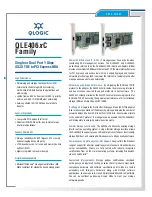
Bluetooth USB Adapter User’s Manual
14
5.2 F
IND
A S
ERVICE
The process of determining the services that a device provides is called Service Discovery.
To initiate a Service Discovery
,
in the Folders pane of My Bluetooth Places, right-click a
device name and select Discover Available Services from the shortcut menu.
Bluetooth services are those things that this computer can do for remote Bluetooth devices.
For example, if this computer allows a remote Bluetooth device to send a fax using a fax
modem that is physically attached to this computer, then this computer is providing the
Bluetooth fax service.
Some services are hardware dependant; this computer cannot provide the fax service
unless it has a physical fax modem, for example.
Some Bluetooth services use virtual “hardware.” The Bluetooth Serial Port service, for
example, does not use a physical port on this computer. Instead, it creates virtual serial
ports that Windows applications can see and use as if they were actual physical ports.
Each Bluetooth service that this computer is capable of providing can be started
automatically when Bluetooth starts. Each service can be setup to require security
measures before allowing a remote Bluetooth device to connect.
Bluetooth services require a Bluetooth application on the remote device; services and
applications usually have coinciding names; i.e., there is a Bluetooth Fax Service and a
Bluetooth Fax Application.
The services supported by Bluetooth are:
•
Bluetooth Serial Port—a wireless connection between two devices. This
connection can be used by applications as though a physical serial cable connected
the devices.
•
Dial-up Networking—allows a device to use a modem that is physically attached
to another Bluetooth device.
•
Fax—allows a device to send a fax using a remote Bluetooth cell phone, modem,
or computer.
•
File Transfer—allows a device to perform file system operations on another
Bluetooth device; browse, open, copy, etc.
•
Headset—allows a Bluetooth headset to be used as the audio input/output
mechanism for another Bluetooth device, such as a computer or cell phone.
•
PIM Item Transfer—allows two Bluetooth devices to exchange Personal
Information Manager data such as business cards, calendar items, email messages,
and notes.
•
PIM Synchronization—allows two Bluetooth devices to synchronize Personal
Information Manager data.
•
Network Access—allows a device to access a Local Area Network via a second
Bluetooth device that is physically connected to the network or allows a remote
device to become part of an ad hoc network provided by the Bluetooth server.
•
Audio Gateway—allows the microphone/speakers on Bluetooth device (typically
a computer) to be used as the audio input/output mechanism for a remote
Bluetooth device, such as a cell phone.
All Bluetooth servers do not necessarily provide all of these services. For example,
network gateways may provide only the Network Access service.
















































